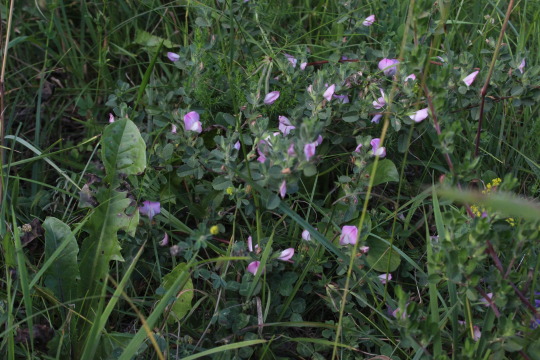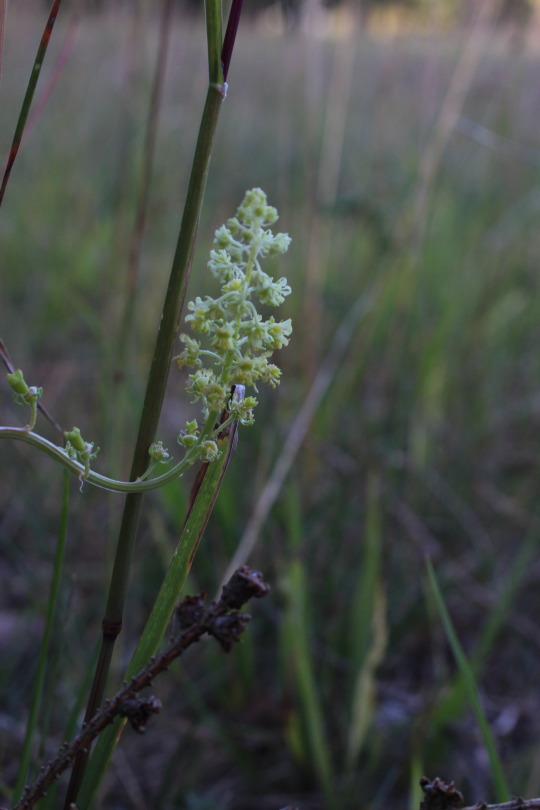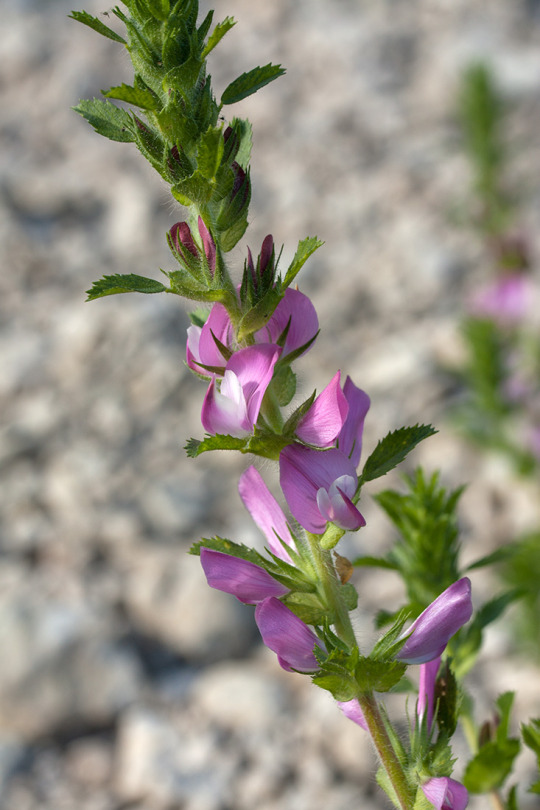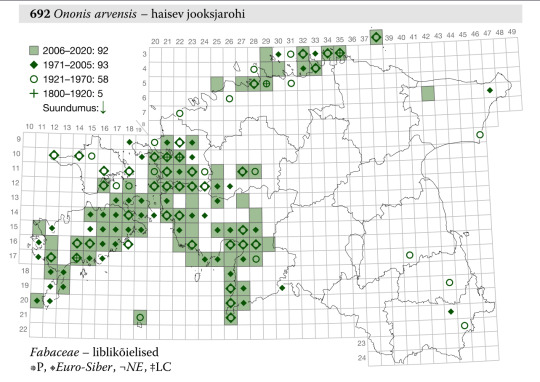#restharrow
Explore tagged Tumblr posts
Text
artistic director for my first fantasy larp told me that my character, and i quote, "is blorbo" which i'm pretty sure means i won
#restharrow#rise oc#sometimes you just gotta step up and become zombie jesus (which is to say jesus for the zombie king)#and have the whole town unite against you while trying to discover the implications behind your mad rambling coded notes and spells#right in the middle of a battle against your/your god's minions
8 notes
·
View notes
Text

Thank you to Liz for taking this pic of Marigold in his less-oft donned mask, the restharrow playtest was an awesome experience!
2 notes
·
View notes
Text




08/09/2024-A Sparrowhawk in the garden which we had a thrilling encounter seeing, beautiful rainbow at Hill Head, fuchsia in the garden and another great recent Osprey sighting at Hill Head. We saw a Sparrowhawk at Hill Head today too.
Only my third ever Wryneck my 205th bird of the year an exquisite bird to see, Hobby in a very strong start to a week off work we have this week for seeing birds of prey, my first Brent Geese of the season amazing to see two of my very favourite birds Brent Goose and Osprey on one day not something I've done before being a winter migrant and summer migrant respectively here their seasons don't overlap by much, Whitethroat, Painted Lady and Red Admiral butterflies chasing each other, Emperor dragonfly, restharrow and scentless mayweed at Hill Head and Blue Tit seen well at home too were among other highlights today.
#photography#osprey#fuchsia#sparrowhawk#wryneck#painted lady#red admiral#restharrow#hobby#rainbow#outdoors#landscape#2024#home#hampshire#solent#england#uk#europe#birds of prey#whitethroat#september
4 notes
·
View notes
Text



Medicago sativa ssp falcata - sickle alfalfa Ononis repens - restharrow Reseda lutea - wild mignonette
#mine#forestcore#forest#nature photography#herbology#medicago sativa#ononis repens#reseda lutea#sickle alfalfa#restharrow#wild mignonette#sichelklee#kriechende hauhechel#gelber wau#july 2023
5 notes
·
View notes
Text










#my pictures#walk#july#summer#seasonal#wildflowers#landscapes#sky photography#plant photography#landscape photography#sky pictures#plant pictures#sunset#evening sky#flowers#tansy#st. james' wort#flax#poppies#marjoram#lady's bedstraw#spiny restharrow#fields#meadow#clouds#sky photoset#of night and light and half light#hey it's me posting pictures of plants again
11 notes
·
View notes
Text
I saw SO MANY flowers today y'all










#flowers#!!!!#yarrow#poppy#bachelors button#marigold#spiny restharrow#corn cockle#purple vipers-bug gloss#some flowers just are Named Things arent they?
0 notes
Text
My partner is avidly requesting the flower language meanings in the valentines' post (some of them aren't quite visible, but they are There) so I'm just gonna put it up here bc fuck it; you all get to know. Hope you all had a lovely Valentine's! Btw; The meanings I'm using are specifically from my book of flowers language, so if some don't show up in a google search, that is why. Agrimonia eupatoria (Agrimonia) - Gratitude/Thankfulness (it was said that to be able to offer protection against evil, poison, as well as banish negative energies and negative spirits) Anemone (Garden Anemone) - Abiding love, Anticipation, Sincerity, Healing, Love, Every Gardener's Pride (specifically in reference to how the God this campaign is also referred to as the Gardener) Aster amellus (Michaelmas Daisy) - Elegance, Faith, Hope, Light, Like a star, Power, I partake your sentiments, Symbol/Talisman of Love Myosotis (Forget-Me-Not) - Clinging to the past, memories, faithful love, forget me not Onobrychis (Saintfoin) - Agitation, Trust in God (gods & God in this case) Ononis (Restharrows) - Obstacles (a believed power was that it prevented spells)
Verbena officinalis (Common Verbena) - Cooperativeness, Enchantment, Hope in darkness, Peace, Pray for me, Rest, Safety, Security, You enchant me [specifically associated with Scarlet variation]; Church unity, Unite against evil
#rea rambles#flower language#don't beat my ass fellow flower likers /lh#rea rambles in the tags#these meanings will not make sense to everyone. they do to me. and thats all that matters.#fun fact; verbenas are eno's favorite flower (she told ulysses in the fighting the queen session but feel like i should add it here.)#(its also on her battle jacket [on the back!])#they are such a Her flower#another fun fact about that flower is that a supposed power is the protection against vampires#lol. lmao even#(looks @ everything)#anyways I think I got em all!
9 notes
·
View notes
Text

Mars Correspondences
From Christian Astrology by William Lilly
(It is mostly word for word. I tried to format it to fit into a nice correspondence list, but the information itself is untouched.)
Zodiac: Aries is his Day-house, Scorpio is his Night-house. Exhaulted in Capricorn, Depressed in Cancer, Detriment in Libra and Taurus.
Nature: Masculine, Nocturnal Planet, in nature hot and dry, choleric and fiery, the lesser Infortune, author of Quarrels, Strifes, and Contentions.
Profession: Princes Ruling by Tyranny and Oppression, or Tyrants, Usurpers, new Conquerors. Generals in Armies, Colonels, Captains, or any Soldiers having command in Armies, all manner of Soldiers, Physicians, Apothecaries, Surgeons, Alchemists, Gunners, Butchers, Marshals, Sergeants, Bailiffs, Hangmen, Thieves, Smiths, Bakers, Armourers, Watchmakers, Botchers, Tailors, Cutlers of Swords and Knives, Barbers, Dyers, Cooks, Carpenters, Gamesters, Bear-wards, Tanners, Curriers.
Diseases: The Gall, the left Ear, tertian Fevers, pestilent burning Fevers, Migraines in the Head, Carbuncles, the Plague and all Plague-sores, Burnings, Ringworm, Blisters, Frenzies, mad sudden distempers in the Head, Yellow-jaundice, Bloodyflux, Fistulas, all Wounds and Diseases in men's Genitals, the Stone both in Reins and Bladder, Scars or small Pox in the Face, all hurts by Iron, the Shingles, and such other Diseases as arise by abundance of too much Choler, Anger or Passion.
Colour: Red colour, or Yellow, fiery and shining like Saffron.
Savour: Those which are bitter, sharp and burn the Tongue.
Herbs: The Herbs which we attribute to Mars are such as come near to redness, whose leaves are pointed and sharp, whose taste is caustic and burning, love to grow on dry places, are corrosive, and penetrating the Flesh and Bone with a most subtle heat: They are as follows: The Nettle, all manner of Thistles, Restharrow or Cammock, Devils-milk or Petty spurge, the white and red Brambles, the white called vulgarly by the Herbalists Ramme, Lingwort, Onions, Scammony, Garlic, Mustard-seed, Pepper, Ginger, Leeks, Dittander, Horehound, Hemlock, red Sanders, Tamarinds, all Herbs attracting or drawing choler by Sympathy, Radish, Castoreum, Aresmart, Assarum, Carduus Benedictus, Cantharides.
Trees: All Trees which are prickly, as a Thorn, Chestnut.
Beasts: Panther, Tiger, Mastiff, Vulture, Fox; of living creatures, those that are Warlike, Ravenous and Bold, the Castor, Horse, Mule, Ostrich, the Goat, the Wolf, the Leopard, the wild Ass, the Gnats, Flies, Lapwing, Cockatrice, the Griffin, Bear.
Fishes, etc: The Pike, the Shark, the Barbel, the Fork-fish, all stinking Worms, Scorpions.
Birds, etc: The Hawk, the Vulture, the Kite or Glead, (all ravenous Fowl), the Raven, Cormorant, the Owl, (some say the Eagle), the Crow, the Pye.
Places: Smith's Shops, Furnaces, Slaughterhouses, places where Bricks or Charcoal are burned or have been burned, Chimneys, Forges.
Minerals: Iron, Antimony, Arsenic, Brimstone, Ochre.
Stones: Adamant, Loadstone, Bloodstone, Jasper, the many coloured Amethyst, the Touchstone, red Lead or Vermilion.
Weather: Red Clouds, Thunder, Lightning, Fiery impressions, and pestilent Airs, which usually appear after a long time of dryness and fair Weather, by improper and unwholesome Mists.
Winds: Western Winds
Angel: Samael
Planetary Alliances: His Friends are only Venus; Enemies all the other planets.
Week Day: Tuesday

Correspondence posts for the other planets: [Sun] [Moon] [Mercury] [Venus] [Jupiter] [Saturn]

#astrology#planets#mars#planetary#planetary magic#correspondences#magic#witchcraft#witchblr#astrology witch#magical correspondences#witches#witch community#witch#astro community#zodiac#zodiac signs#astroblr#astrology facts
25 notes
·
View notes
Text







some photos i took on the dunes at beach A!
dunes are formed on beaches with a wide breadth; as the wind blows inward from the shore on sandy beaches, beach grasses such as matron will root in the loose sand and give it structural integrity. the sand will up the bank, crest the peak, and settle behind, building up dunes! the grass is crucial to this process.
you get a lot of variation in plant life depending on the stage of the dune — embryo dunes, mobile dunes, or fixed dunes, which transition into grassland typically.
the order of these photos goes, from first to last, from the dunes closest to the coast to those furthest away. they are in order:
semi-fixed dunes:
coltsfoot and … i think a form of restharrow? i am not sure! — coltsfoot gets its name from its hoof-shaped leaves. it is a flowering plant! none were flowering yet though.
bird’s-foot trefoil — another generalist, but i see it most along the coast. it is the larval food of the common blue butterfly!
fixed dunes:
bloody geranium — this gets its namesake from its new growths, which appear bright red!
ragwort — a generalist of a flower than can be found in most grasslands!
grassland:
white deadnettle — another generalist
hemlock — a generalist often found near path sides, as this one was. i believe it is hemlock rather than cow parsley due to the purple splotches on its thick stem.
dove’s-foot crane’s-bill (a geranium)
here are some other photos of the dunes that show a variety of other plants:



these were all taken in the semi-fixed to fixed dunes! we have in order:
goose grey and some more bird’s-foot trefoil
miniature daisies and mouse-ear hawk weeds
dandelion, hawks bit, common yarrow, and meadow pea!
there was so much to see on the dunes, and i definitely did not cover all of it. i believe a majority of the grass was marram grass. i also saw a lot of snail shells, and some sycamore trees were encroaching down the hill (although they weren’t doing great!)
the surrounding area is magnesium limestone that is unique to the northeast of england, meaning that the cliffs here are alkaline rather than acidic. it is also rich in calcium and, of course, magnesium — which gives us great potential for species richness and contributes to the uniqueness of our heritage coasts. most of our magnesium limestone comes in the form of dolomite!
5 notes
·
View notes
Text
Haisev jooksjarohi
Ononis arvensis L., Papilionaceae Luutõverohi, luuvalurohi, luujooksvarohi, põld-jooksjarohi, soonejooksvarohi, tõhklane, õhklane Field restharrow


Haisev jooksjarohi kasvab aruniitudel, sagedamini teede läheduses, tarade ääres, liivikutel.
Ravimina kasutatakse juuri, mida korjatakse septembris ja oktoobris.
Tarvitatakse hemorroidide vastu ning uriinierituse soodustamise ja palaviku puhul.
Kirjeldus
Haisev jooksjarohi kasvab aruniitudel, sagedamini teede läheduses, tarade ääres, liivikutel. Vars on püstine või tõusev, tugev ja oksine, sagedasti punakaspruun, 30-60cm pikk, pikkade eemalehoiduvate karvadega, mille vahel on tihti näärmekarvu. Lehed on ülal lihtsad, all kolmetised, lehekesed piklik-elliptilised, hambulised, enam-vähem teritunud, enamasti näärmekarvased, veidi halvalehalised.
Õied liblikjad, roosad, harva valged või valkjad, kahekaupa lehtede kaenlas või ladva pool pikliku kobarana. Vili - paisunud kaun, lühem kui tupplehed.
Õitseb juulis ja augustis. Esineb sagedamini Lääne- ja Põhja-Eestis ning saartel. Mujal kasvab harva või puudub koguni.
Ravim
Ravimina kasutatakse haisva jooksjarohu juurt - radix Ononidis. Ametlikult võeti see droog apteekides kasutamisele alles hiljuti.
Jooksjarohu juuri kogutakse sügisel. Juured kaevatakse maast välja ning raputatakse mullast puhtaks. Maapealsed taimeosad lõigatakse ära. Juured pestakse külgejäänud mullast kiiresti jooksvas vees ja lastakse mõni päev kuivas kohas närbuda, selle järel aga hästi tuulutatavas ruumis õhukese kihina kuivada. Pikad juured lõigatakse lühemateks tükkideks.
Droogi moodustavad silinderjad või kandilised juured, kuni 40cm pikad ja 0,5-2cm jämedad. Väljast on juured pruunid, seest kollakasvalged või hallid; neil on omapärane lõhn ja vastik mõrkjas maitse. Droogis lubatav niiskuse sisaldus on kuni 14%, tuhajääk 10%, orgaanilisi ja mineraalseid lisandeid võib olla mitte rohkem kui 1-2%.
Jooksjarohu juured sisaldavad kahealuselist triterpeenalkoholi onotseriini, isoflavoonglükosiidi, ononiini ja tundmata struktuuriga glükosiidi onooni, vähesel määral eeterlikku ja rasvõli, valku, fenoolseid ühendeid ja mineraalsoolasid.
Toimed
Jooksjarohu juure keedist tarvitatakse peamiselt hemorroidide raviks.
Annused: võetakse 30 grammi droogi 1 liitri vee kohta; keedetakse seni, kuni on jäänud 1/2 liitrit vedelikku. Kurnatud vedelikku juuakse 3 korda päevas enne söömist, 1/4 klaasi korraga. Ravi kestab 2-4 nädalat.
Müügil on ka haisva jooksjarohu tinktuur - droogi alkoholväljatõmmatis, mida kasutatakse sama haiguse ravimiseks.
Haisva jooksjarohu keedist on tarvitatud ka uriinieritust soodustava vahendina ning palaviku ravimisel. Seda soovitati ka raviks neeru- ja põiekivide ning -liiva puhul, reumaatiliste haiguste ja kroonilise ohatistõve korral. Eestis on selle taime keedist tarvitatud peamiselt jooksva puhul. Sellest on taim saanud ka oma rahvapärased nimed.
Taime levi

Allikad
Tammeorg, J., Kook, O. & Vilbaste, G. (1973). Eesti NSV Ravimtaimed. Tallinn: Valgus.
Eesti taimede levikuatlas 2020
3 notes
·
View notes
Text




Ranunculus repens, the creeping buttercup, is a flowering plant in the buttercup family Ranunculaceae, native to Europe, Asia and northwestern Africa. It is also called creeping crowfoot and (along with restharrow) sitfast. Ranunculus is a diminutive of 'rana', meaning 'little frog'. This name is in reference to the amphibious habitat of many Ranunculus species. Repens means 'creeping' or 'stoloniferous'.
0 notes
Text
Flowers of Finland
Anemone hepatica (common hepatica)
Arabidopsis suecica
Asperula tinctoria (dyer's woodruff)
Caltha palustris (marsh marigold/kingcup)
Campanula patula (spreading bellflower)
Campanula uniflora (arctic bellflower)
Carduus acanthoides (broad-winged thistle)
Chamaenerion angustifolium (rosebay willowherb)
Convallaria majalis (lily of the valley)
Cornus suecica (dwarf cornel)
Dianthus armeria (deptford pink)
Galeopsis speciosa (large-flowered hemp-nettle)
Geranium sylvaticum (wood cranesbill)
Geum rivale (water avens)
Hypericum perforatum (St John's wort)
Linum usitatissimum (common flax)
Lythrum salicaria (purple loosestrife)
Medicago sativa (alfalfa)
Noccaea caerulescens (alpine pennycress)
Nuphar lutea (yellow water-lily)
Nuphar × spenneriana
Ononis arvensis (field restharrow)
Polemonium caeruleum (Jacob’s ladder)
Prunus padus (bird cherry/hackberry)
Sabulina rubella
Saxifraga cespitosa (tufted saxifrage)
Saxifraga rivularis
Tripleurospermum maritimum (false mayweed/sea mayweed)
Vaccinium vitis-idaea (lingonberry)
Veronica agrestis (green field-speedwell)
Viola canina (heath dog-violet)
Viola riviniana (common dog-violet)
Viola tricolor (wild pansy)
1 note
·
View note
Text










#my pictures#walk#summer#july#wildflowers#seasonal#sky photoset#sky photography#evening sky#landscape photography#landscapes#plant photography#plant pictures#bee#insects#scabiosa#marjoram#spiny restharrow#meadow#sky pictures#sunset#clouds#fields#of night and light and half light#hey it's me posting pictures of plants again
8 notes
·
View notes
Text
I saw SO MANY flowers today y'all










#flowers#!!!!#yarrow#poppy#bachelors button#marigold#spiny restharrow#corn cockle#purple vipers-bug gloss#some flowers just are Named Things arent they?
0 notes
Text
06/05/2024
Rigolisse n. m. [riɡolis] "Liquorice (plant or confection); common restharrow (due to similarity of flavour)", Glycyrrhiza glabra/Ononis repens
En Norouague il oiment lé rigolisse salaï; ch'est d'tché tchuriaeux, haen? - In Norway they like salted liquorice; it's strange stuff, eh?
0 notes
Text
My restharrow character! A medieval jester with a secret. :3

A Fool named Marigold.
1 note
·
View note